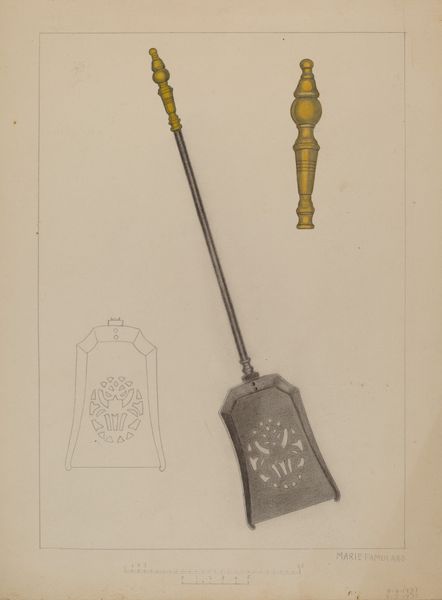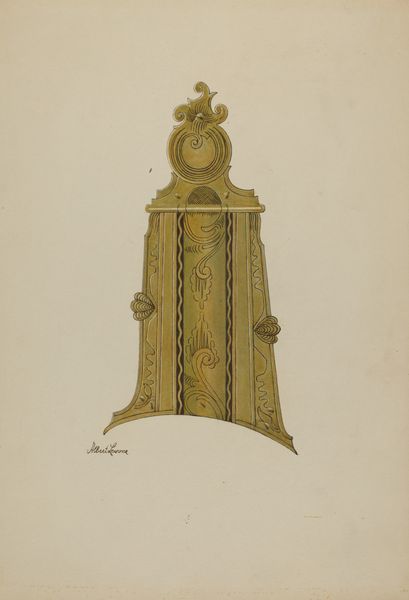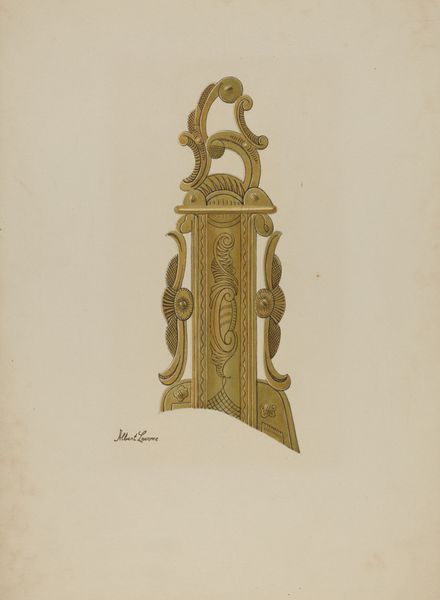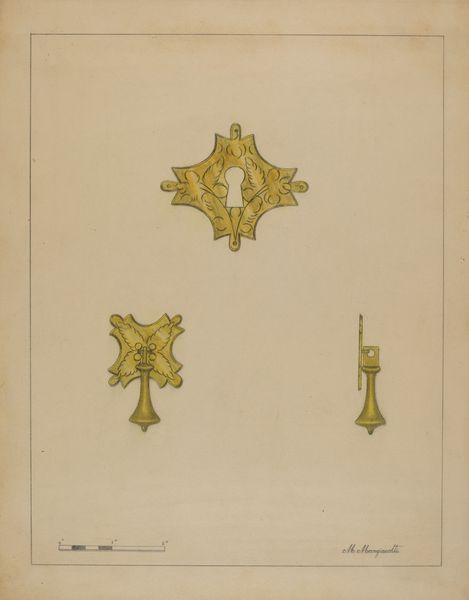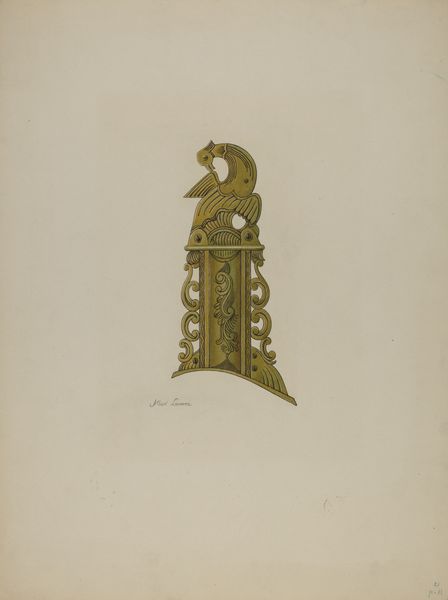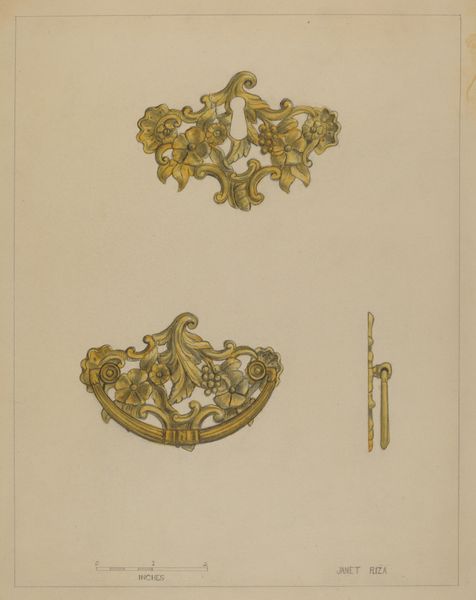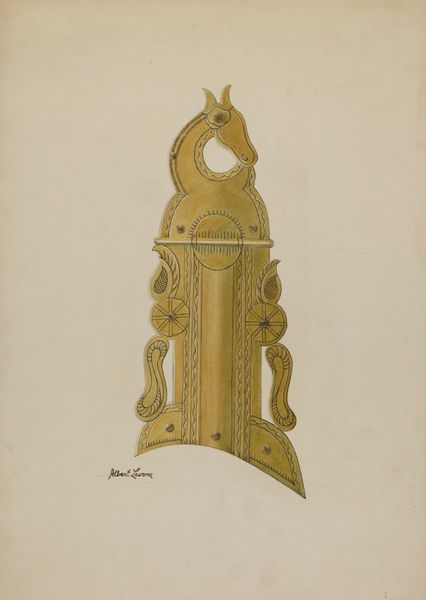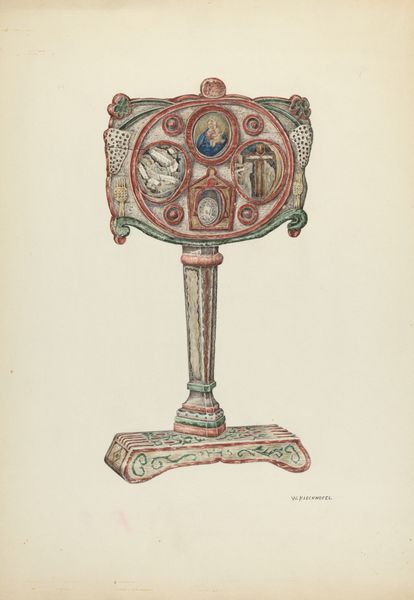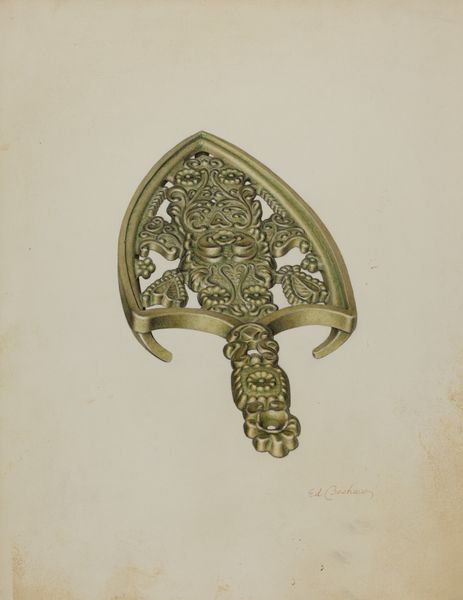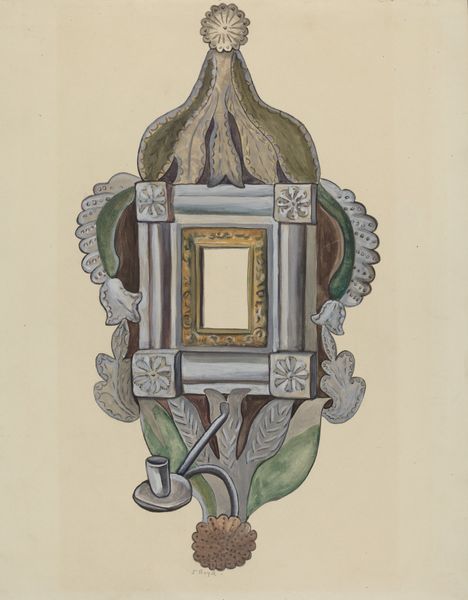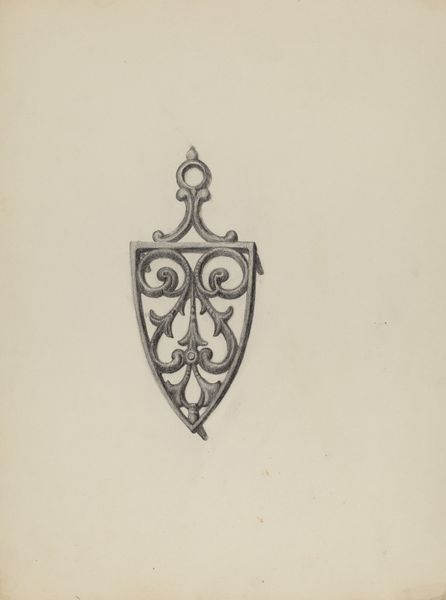
drawing, coloured-pencil, watercolor
#
drawing
#
coloured-pencil
#
water colours
#
watercolor
#
coloured pencil
#
watercolor
Dimensions: overall: 35.6 x 28.2 cm (14 x 11 1/8 in.) Original IAD Object: 5 1/2" high; 2" wide
Copyright: National Gallery of Art: CC0 1.0
Editor: This is Dana Bartlett's "Brackets," a watercolor and colored pencil drawing from around 1937. I find the composition, with these isolated images of ornate hardware, strangely haunting. What do you see in this piece? Curator: I see a study of power, and its relationship to the domestic sphere. Consider when this was made: 1937, during the Depression. These meticulously rendered, mass-producible fixtures, depicted with such care, almost become stand-ins for something larger, perhaps an elegy for lost grandeur and a longing for order during economic and political instability. Who were these brackets for, and what kind of structures were they intended to support? Editor: So, you are saying that these functional objects, like brackets, could be loaded with social and political significance. I hadn't thought about that at all. What kind of social anxieties might be projected on such fixtures? Curator: Well, the detailed renderings could point to a desire to hold onto status, to control one's environment when so much was in flux. And let’s consider who would have had the leisure to produce and consume these kinds of images. Think about class, gender, and access to resources. Who benefits from this aesthetic, and whose stories are perhaps left out of the frame? Editor: That's fascinating. I was focused on the formal elements, but your reading brings in so many other layers. Curator: Art is never created in a vacuum. It's always speaking to, and emerging from, a specific historical and social context. This piece, even something seemingly simple, holds a multitude of possibilities for interrogation and interpretation. Editor: I’ll definitely look at art differently now. I see how connecting the artwork to its time can really enrich its meaning. Curator: Indeed. And hopefully, this conversation encourages our audience to question the assumptions embedded within even the most seemingly straightforward images and objects.
Comments
No comments
Be the first to comment and join the conversation on the ultimate creative platform.

